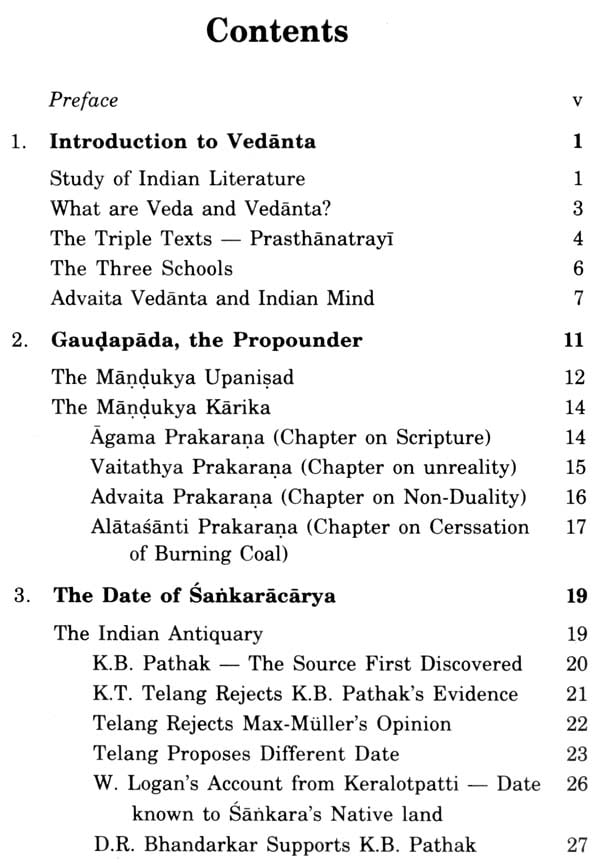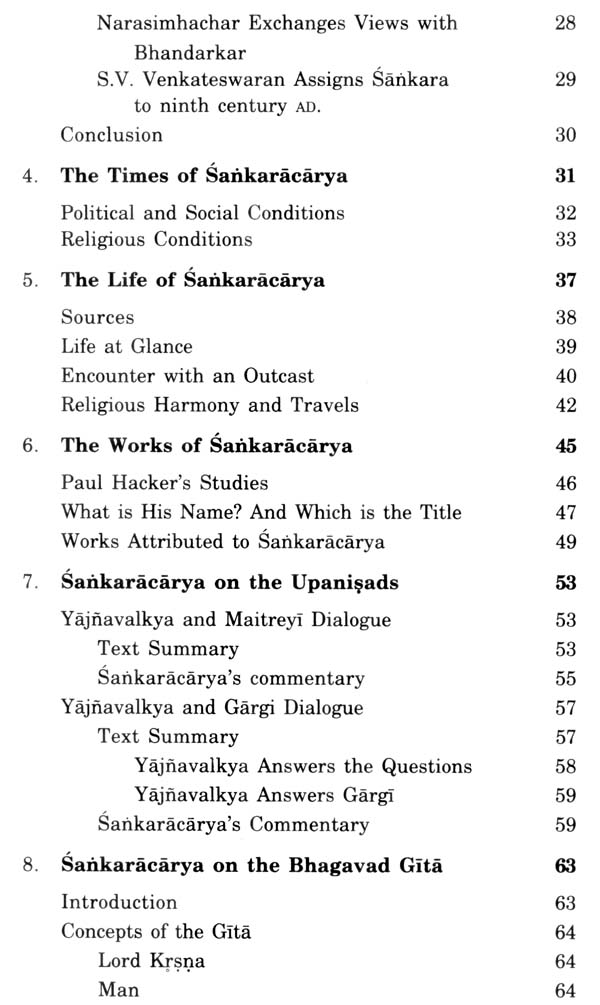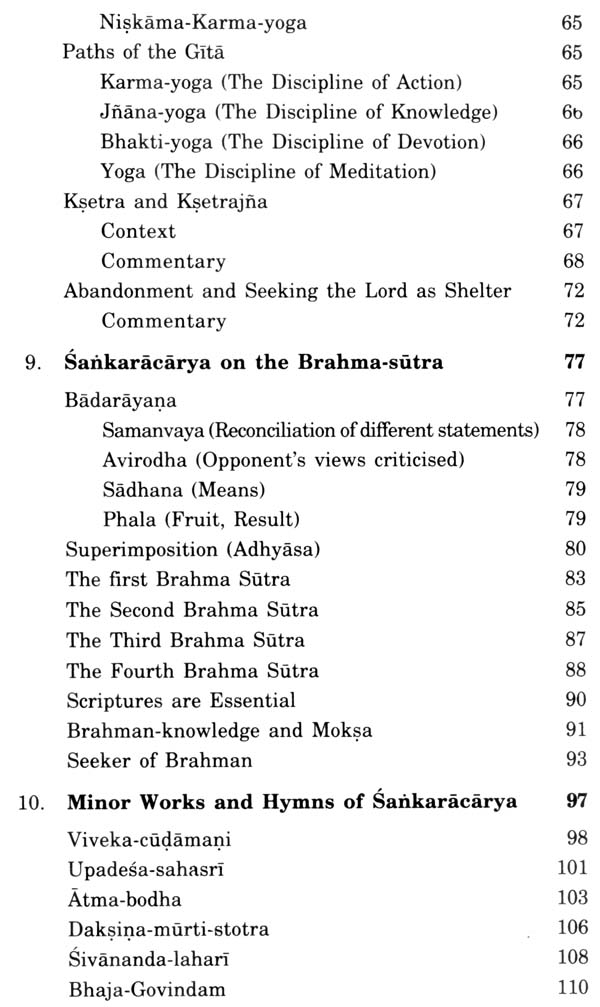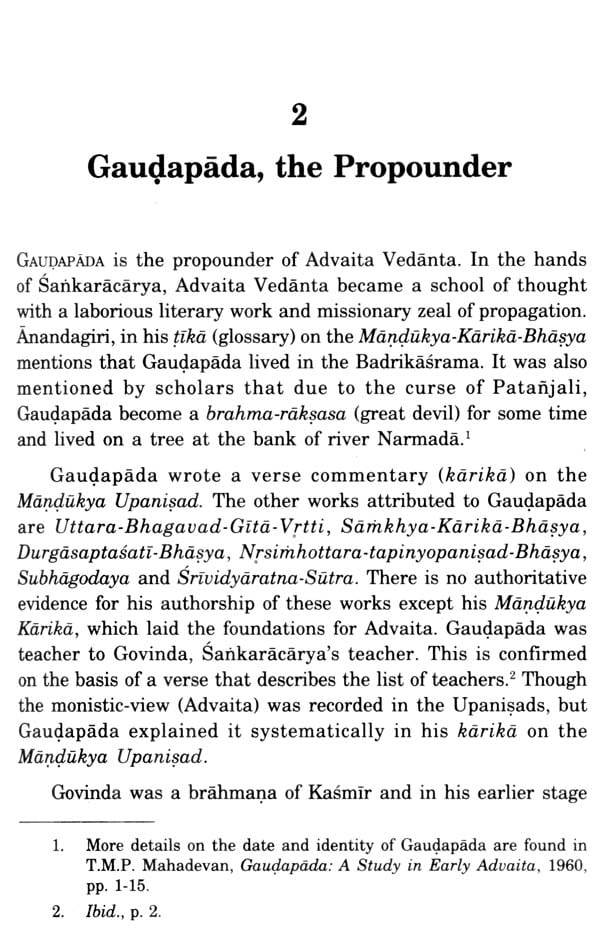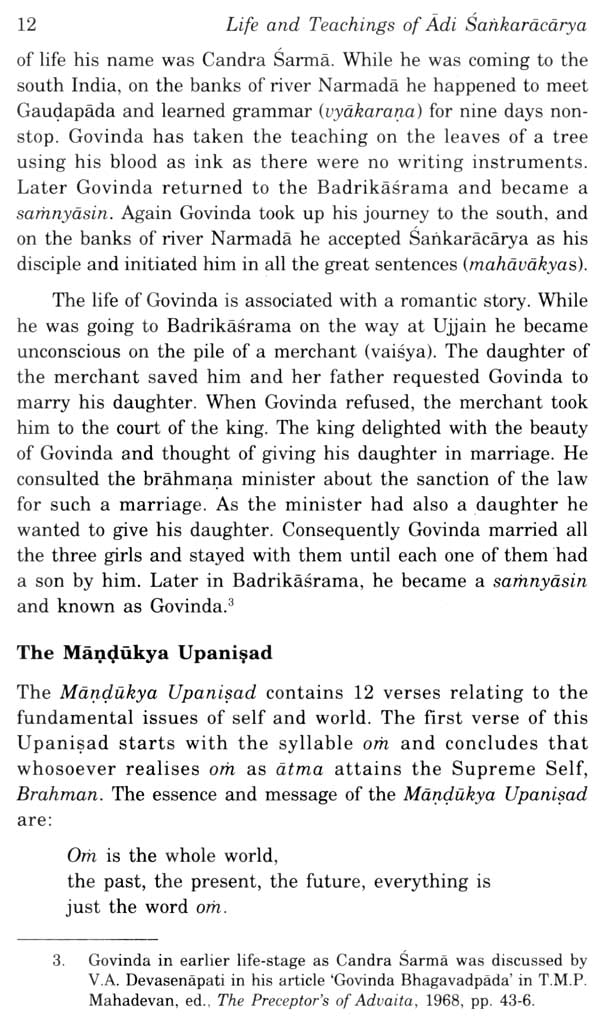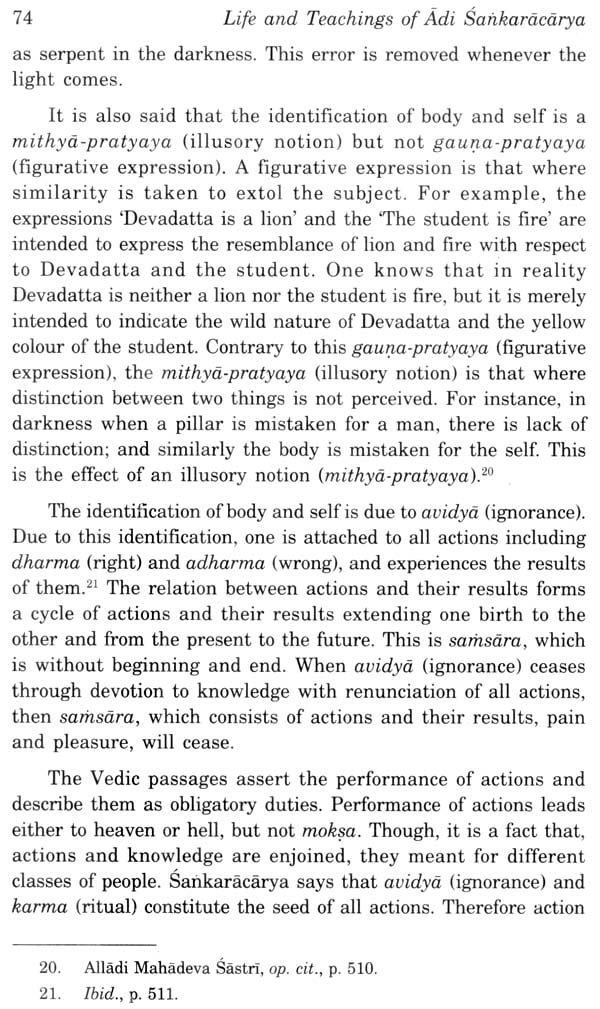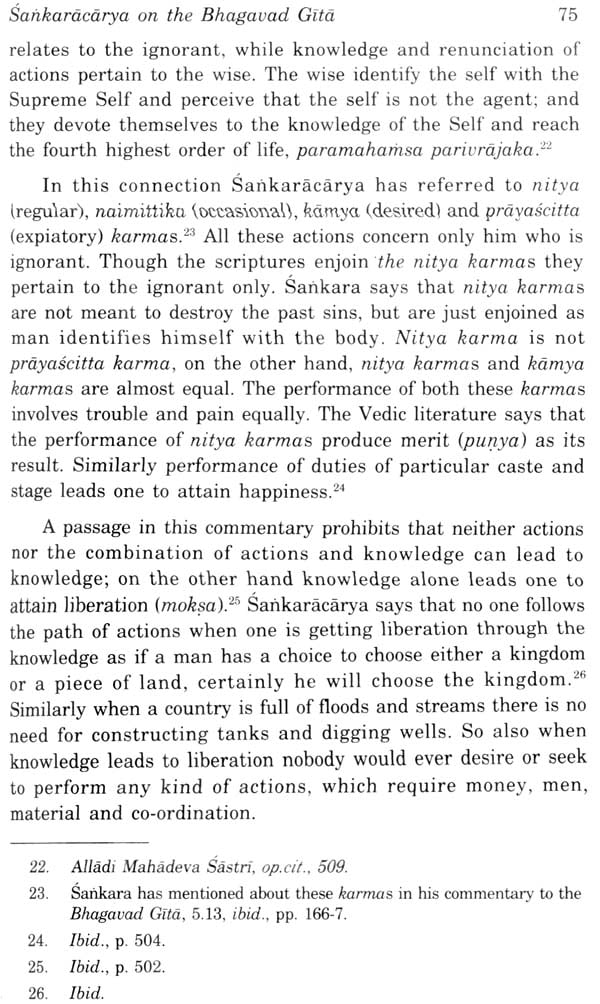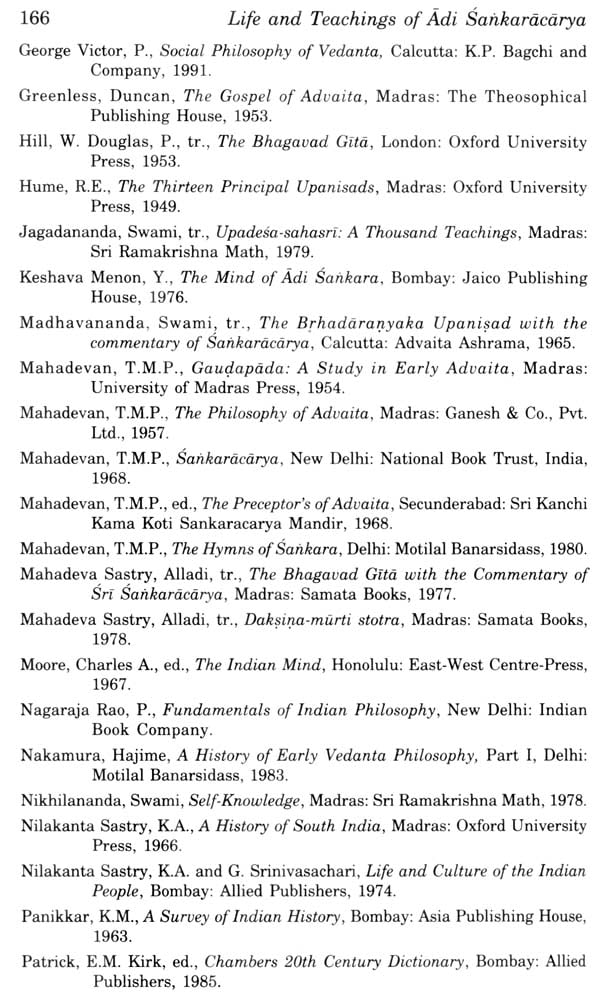
Life and Teachings of Adi Sankaracarya
Book Specification
| Item Code: | NAY992 |
| Author: | P. George Victor |
| Publisher: | D. K. Printworld Pvt. Ltd. |
| Language: | English |
| Edition: | 2018 |
| ISBN: | 9788124604076 |
| Pages: | 180 |
| Cover: | PAPERBACK |
| Other Details | 8.50 X 5.50 inch |
| Weight | 260 gm |
Book Description
Here, Dr. George Victor attempts to study comprehensively Sankaracarya's teachings on Vedanta - his views on scripture, perception and inference as pramanas or standards of knowledge’s; his explanations of the relation between Brahman and atman, Brahman and Isvara, maya and the world; and his concepts of jnana marga, karma marga and moksa, among others.
The work takes a close look at the date of Sankara and his life and times before plunging into a penetrative study of Sankara's commentaries on the triple texts, the Upanishads, the Brahma sutra and the Bhagavad-Gita - the foundations of Vedantic thought. With constant references to Sankara's major and minor works and hymns, and using a simple language that reflects a unique clarity in understanding Sankara's philosophy, it also examines his methodology of philosophical interpretations and how academicians have estimated Sankara in the past.
Authored by a scholar who has for long been associated with research and teaching of Sankara's philosophy, the book will be of interest to scholars and students of Indian philosophy as well as general readers.
Currently he is Senior Professor of Philosophy and Director, Centre for Religious Studies, Andhra University, Visakhapatnam.
After the retirement of Professor K. Satchidananda Murty in 1984, I started teaching Sankara Vedanta. As a part of instruction, reading material on Sankara was prepared; thus, the seeds for writing a book on Sankara sowed. I had also the privilege of attending the 'International Seminar on Sankaracarya' held in New Delhi from 9 to 12 January 1989.
After listening to the deliberations, I felt that there is a need and scope to write a comprehensive book on the life and teachings of Sankaracarya, Subsequently Prof. K. Satchidananda Murty encouraged me through his letter dated 2 May 1989:
Dr. Victor ... if you decide to write a book on Sankara, devote yourself to his Philosophy only. Do not bother about his date and life, because there is no unanimity about them. I wish you to be active and creative, and in due course become well known.
This work took twelve years to complete, as I was sick, once due to handling the old books in the library and later upset due to the death of my father on 14 December 1992. Further, I was also busy as UGC Coordinator, Andhra University from December 1994 to May 1998, Head, Department of Philosophy from July 1995 to June 1998, and Coordinator, UGC Special Assistance Programme, Department of Philosophy, Andhra University from January 1996 to December 2000. At last, I could complete in accordance with the end of UGC Special Assistance Programme.
This book is intended for scholars, students and general readers. Accordingly, the early researches on the date and works of Sailkara have been brought out in detail. Not only Sailkara's commentaries on the Upanishads, Bhagavad Gait and the Brahma Sutra but also the books attributed to him, especially the minor works prakarana granthas) and hymns (stotras), have been narrated purposefully for the sake of students and general readers. There are certain chapters on the times, method, and social philosophy of Sankara, which were discussed for the first time. Apart from analyzing the Vedantic concepts, how the academicians have estimated Sailkara has also been added. As a whole, extensive discussion is avoided; precision maintained; the language made simple and the topics are accurate. Though compact, the book is comprehensive in bringing together what the world-teacher (jagad guru) has said about Vedanta, the sole message of India.
A study of the commentaries of Sailkara and his minor works prove the fact that what Sailkara contributed to Indian tradition is not philosophy but theology ibrah ma-oidyti), Prof. K. Satchidananda Murty has also stated that what Sankaracarya has done to Vedic religion, was done by St. Thomas Aquinas to Christianity. Sankaracarya and Thomas Aquinas were more theologians than philosophers. Further the reader is advised that the word 'Brahma' is more appropriate than 'Brahman' to indicate the Absolute God, as the word 'Brahma' was recorded in original Sanskrit works more than the word 'Brahman', appeared in the translations made available in south India.
Apart from oral transmission, manuscripts were written on palm-leaves and strips 'of birch-bark in later times. The manus cripts were preserved in the private houses of brahmana pandas; monasteries of Buddhist monks, temples and in the palaces of kings. The oldest Indian manuscripts were found not only in India but also in Nepal, Japan, and Eastern Turkey and in various parts of Asia like Kashgar and Takamakan near Khotan. The script used in the ancient literature was Devanagari in north India and regional dialects in south India. However, on the basis of vast manuscripts in Sanskrit language, it is generally stated that ancient Indian literature was nothing but Sanskrit literature.
Study of Indian literature
In 1640 the son of Shah Jehan and the brother of Aurangzeb, Prince Dara Shikoh has translated some Upanishads into Persian.
During the seventeenth and eighteenth centuries some European travelers and missionaries started translating and publishing certain manuscripts. The first Sanskrit book translated into a European language was the Bhagauad cue. In 1785 Charles Wilkins has translated it into English. He was the first English man who learned the Sanskrit. Later William Jones has published the translations of the Abhijnanasakuntalam of Kalidasa in 1791 and the law book of Manu in 1794. Henry Thomas Colebrook (1765-1837), who worked with William Jones, was the actual pioneer for translation of the philosophical and religious literature in India. At the age of 17, H.T. Colebrook came to India in 1782 and devoted his entire life to the study and translation of Vedic texts. His essays on the Vedas and different systems of Indian thought which were published in 1837 as a book became model for the later historians of Indian philosophy. It was an outcome of 40 years of research. In 1784 the Asiatic Society of Bengal was established to collect the various manuscripts. H.T. Colebrook was appointed as its President in 1807.
Different men from various parts of the country procured the manuscripts of the Vedas. In 1805 H.T. Colebrook wrote in the Asiatic Researches about the efforts the early researchers have made:
In the early progress of researches into Indian literature, it was doubted whether the Vedas were extant or preserved. . . . The doubts were not finally abandoned, until Colonel Politer obtained from Jeypur a transcript of what purported to be a complete copy of the Vedas, and which he deposited in the British Museum. About the same time Sir Robert Chambers collected at Benaras numerous fragments of the Indian Scripture. General Martine, at a later period, obtained copies of some parts of it; and Sir William Jones was successful in procuring valuable portions of the Vedas, and in translating several curious passages from one of them. I have been still more fortunate in collecting at Benaras the text and commentary of a large portion of these celebrated books.'
Book's Contents and Sample Pages
